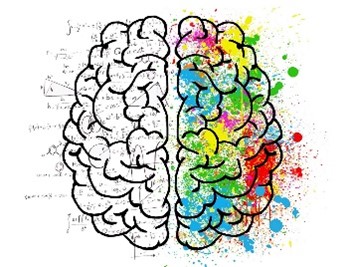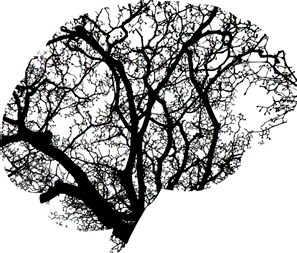How Our Brains Work
Tied Into Business Valuation
This article provides readers with current information that emphasizes how the brain works. Understanding how the brain works and factors that may affect it positively or negatively may impact conclusions and factors that find their way into a business valuation. There are potential biases and/or blind spots. The author is not a neuroscientist but shares neuroscientific knowledge because he believes understanding brain function will alert readers to factors that may enhance one’s own analytical prowess and also find a place in the business valuation practitioner’s practice.
Having worked with neuroscientists for over nine years,[i] doing research in this area, acting as a mediator and/or negotiator in valuation matters related to divorce, business to business, within businesses (succession planning and shareholder disputes) or with the IRS,[ii] this article provides you current information that can help you. It is suggested with the science growing exponentially, that articles will be out of date within a two-year period. The emphasis of this article is how the brain works and how knowing how the brain works relates to business valuation. I am not a neuroscientist, but with my limited knowledge, I am hoping this can help you in your own analysis and in application in your practice.
How the Brain Works
Clearly this is too broad of a topic, but I want to share some key elements for your consideration. Key elements presented here relate to how the brain protects us, connections in the brain, how you can help your brain, and do so when working with others.
How the Brain Protects Us
As a species, we have survived a long time by allowing the brain to take actions to protect us. You look continually for food, water, shelter, and sex. You are looking to obtain these basic elements on a continual basis. However, the brain is lazy.[iii] The brain likes to take the easiest path to anywhere to save energy for unexpected emergencies. As such, the brain likes to promote bias and to predict what will happen based on previous experiences and what has been reinforced by what you see, read, see, and hear from others.
We all have bias.[iv] Why? The brain knows what has happened in the past and likes to reward itself with being able to predict what will happen in the future based on what has happened previously. A way to overcome bias[v] is to take yourself out of your comfort zone and move into the learning zone. That is explore other perspectives and put yourself in situations where you can expand your horizons.

Our brain has two hemispheres that are gated. Historically, neuroscientists referred to the right and left brains as separate and distinct elements. Now neuroscientists indicate that the two halves of the brain are continually interacting with each other with fast acting gates between the two halves of the brain. It is true that the right hemisphere is more big picture oriented and that the left hemisphere is more oriented towards details. This is one reason for this author to introduce the topic initially, to give you a heads up and to help the right hemisphere big picture orientation side of the brain to become more comfortable. The left hemisphere is more comfortable now as the details are becoming known. The myth of the totally opposite hemispheres persists.[i] However, studies on individuals that have lost one hemisphere or another and have been able to survive (and in some instances thrive even with that area of the brain removed), have proven historical theories obsolete.[ii] This has overcome previous theories regarding two distinct hemispheres. The brain is the only organ that is capable of reinventing itself. This is called neuroplasticity.
Connections in the Brain

The brain is like a deciduous tree that loses its leaves in the winter. Neurons in the brain like super highways or bigger branches or the trunk for easier travel.[i] When you start something new, there is an uncomfortable feeling associated with the new activity. Your brain is wondering how safe this is going to be. As you repeat the task, you become more comfortable. Over time, it may become a habit. Think of your morning routine and how this has become a habit.
You have learned a lot over time. However, there are many things that you learned that you no longer use or that you are not as competent at today as you once were. In my case, I will present calculus and linear algebra as an example. I was a math minor in college many years ago. At the time, I was fairly good at this type of math. In my daughter’s senior year in high school, I happened to attend a calculus 1 class of hers, as part of a parents come to school with your child day. They took a quiz. I asked if I could take the quiz too. She scored a 10 out of 10. I scored a 4 out of 10. What happened?
As we age our brains tune and prune the branches (dendrites) and remove pathways that are no longer being used.[ii]
However, our brain continually taps into what remains of existing memories. These existing memories drive our current actions. If the dendrite has been pruned, our brain relies on what is easiest and can be taken as a reflex from our old habits. These habits can be good or bad. Once again, it is possible for our biases to be reinforced.
How You Can Help Your Brain
It turns out what is good for the body is good for the brain.[iii] You need to eat more plant-based foods, drink more water, never stop moving, have consistent sleep patterns, and practice mindfulness at least 10 minutes a day.[iv] Let us take a look at each of these briefly.
- Eat more plant-based foods
Eating mor plant-based foods are good for the body and the mind.[v] Antioxidants like blueberries, dark green and orange colored fruit and vegetables seem to be best.[vi] A healthy Mediterranean diet generally fits the bill.[vii]
Did you know you have two brains? I did not know this. Unlike the brain inside our skull with billions on neurons, I found out that in our gut we have a hundred million of the same neurons.[viii] Why are they there? No one knows. Ever had that feeling that something just does not feel right in your gut? There may be something to that. Science does not know why either. Interesting, isn’t it?
- Drink more water
It is especially important that you remain hydrated. When you are thirsty, you have actually gone beyond where you should be, in other words, you should have had water far earlier. How much water should you drink every day? For men on average, you should drink 15.5 cups or 3.7 liters a day, and for women on average you should drink 11.5 cups or 2.7 liters per day.[ix]
- Never stop moving
Many people think exercise is a four-letter word. What is needed for the brain to be healthy is for you to keep moving.[x] Walk, swim, bike, or do something. As a minimum, you only have to do this for 150 minutes a week or more. Many people start too aggressively, become bored, ache because they started to ambitiously, and quit. Take the advice of the NY Times best seller, Atomic Habits[xi], by James Clear and start slow. Make small changes.
- Have consistent sleep patterns
How much sleep is the right amount of sleep?[xii] As appraisers, you will love the answer. It depends. In general, you need seven to nine hours of sleep, but age, body type, amount of exercise, and other variables need to be considered. More important, is a consistent wake up time. If you stay out late, do not simply sleep in. Get up about the same time, but then take a nap during the day. That is much healthier for your brain to recover.[xiii]
- Mindfulness at least 10 minutes a day
Mindfulness[xiv] may be meditation, prayer, reflection, or yoga for example. Taking time out to sit outside and both watch and listen to nature can help. Consistently, studies have shown that 21 days of mindfulness results in a calmer demeanor, less prone to anger, better responsiveness to others with kindness and empathy, and other positive ramifications.[xv]
Working with Others
It turns out that our brains peak to an extent at about age 25.[xvi] Working with others under age 25, their brains can adapt quicker, learn a new language faster, and pick on other things quicker. As mentioned earlier, with neuroplasticity the brain is the only organ that can rewire itself. This rewiring can happen at any age.
Our brain is continually exploring senses, perceptions, feelings, thoughts, and behaviors. These interactions tie into our biases. Biases are received informally and behave externally. Think about this last statement. Read it again. When you want to believe something, you look to reinforce this. Think about our divided country and politics. If you believe x is bad, when you hear or see something that reinforces x is bad, your brain is appreciating how right you are. You have reinforced the stereotype and bias.
Applying This Commentary to Business Valuation
Your brain wants to be right. Your brain likes to be in control, predict what will happen, and have a sense of progress. When these elements fail, it is called the stress response.[xvii] Think about this relative to a business valuation. You want to be right. Your client and their attorney reinforce that you are right, when you give them what they want. You brain wants to buy into this perspective too. With the brain being lazy, this is the easiest path. Consider a critique of your work by a third party that can look at your work objectively to help you see blind spots you otherwise would not see. Courts are looking to affirm the most reasonable approach. You want to appear to be the most reasonable appraiser compared to the other side.
Think about your assumptions, your limiting conditions, and the actions you took in your business valuation. Might there have been a bias for your perspective based on your client’s expectation? A recent article in the Journal of Behavioral Science ran two studies and found a statistically significant bias by business appraisers.[xviii] For a condensed version of this article, check out my blog commentary.[xix] Give serious consideration to the results of this study as you make and apply your assumptions.
If you do what you have always done, why would you expect to find different results? Think about how our field has changed. Think about how you do your valuations. How much do you collaborate with others on your work? Do you have your work reviewed by others within the firm, or do you periodically ask for an outside review? If you are submitting an estate or gift tax return valuation, do you ask a valuer that is familiar with the IRS valuation program to conduct not necessarily a thorough review, but a review for how the IRS may view this report? This can be very educational for you and give you other things to think about to minimize the probability of an audit. This can give you greater peace of mind.
When you think about how to help your brain, think about yourself and also think about the other side. What do you do? What have they been doing? Might they have been stressed? What do you know about them, and their habits? The more you know, the better you can connect with them to develop an authentic relationship; and the more you listen to them, the better your chances are to resolve your issue with them. Keep an open mind. Reach out to them when possible.
Keep in mind your own biases. For example, with the IRS on an estate or gift tax valuation, what is your perspective of the IRS? How might that perspective impact your valuation and, if audited, your interaction with an IRS agent and the business valuer at the IRS? Are you there to learn, listen, and interact with the intention to help? Are you there to go to war and prove them wrong and that you are right? Your attitude and bias have a major impact on the approach and outcome.
Conclusion
Consider these introductory elements from neuroscience. Consider how they impact what you do. This article shared with you some ideas based on neuroscience and suggested some things to think about related to business valuations, your personal situation, your own biases, and other concerns. It asked what do you know about the other side and how these elements may be impacting you? Hopefully, this commentary will provide some food for thought and help you as you consider your brain health, your perspective to your work, and how you may approach your work in the future.
Michael Gregory, NSA, MBA, ASA, CVA, is the founder of Michael Gregory Consulting, LLC. He is an international speaker, author, and consultant who helps clients identify, address, and resolve issues with the IRS, business to business, and within businesses (shareholder disputes, succession planning) so that they can take advantage of The Collaboration Effect® He has helped hundreds of clients work through conflicts and negotiate winning solutions.
Mr. Gregory can be contacted at (651) 633-5311or by e-mail to mg@mikegreg.com.
[i] Primary sources for this article are Dr. Ericka Garms, Neuroscientist who wrote The Brain Friendly Workplace; Dr. John D. Molidor, Medical Doctor, Neuroscientist, Psychiatrist and former Dean at the Michigan State University Medical School; Dr. Rick Hanson, Psychologist from The Greater Good Science Center at the University of California at Berkeley; and Dr. Terry Wu, Neuroscientist that specializes in neuroscience applications in marketing.
[ii] Over 2,500 mediations, negotiations, and facilitations over more than 35 years
[iii] https://www.sciencedaily.com/releases/2018/09/180918090849.htm
[iv] https://www.merriam-webster.com/dictionary/bias
[v] https://hbr.org/2015/05/outsmart-your-own-biases
[vii] https://www.hydroassoc.org/neurons-a-brain-superhighway/
[x] https://erikagarms.com/creating-brain-friendly-workplaces/
[xii] https://www.atchison.k-state.edu/docs/10_tips/colorful_veggies.pdf
https://www.latimes.com/archives/la-xpm-1990-12-06-fo-7833-story.html
[xiv] https://www.healthline.com/nutrition/mediterranean-diet-meal-plan
[xv] https://neuroscience.ubc.ca/our-second-brain-more-than-a-gut-feeling/
[xviii] https://jamesclear.com/atomic-habits
https://www.verywellhealth.com/30-days-to-better-sleep-3973920
https://cptsdfoundation.org/2020/01/06/the-benefits-of-mindfulness-prayer-and-meditation/
https://www.hopkinsmedicine.org/health/wellness-and-prevention/9-benefits-of-yoga
[xxv] https://www.tandfonline.com/doi/full/10.1080/15427560.2020.1821687










